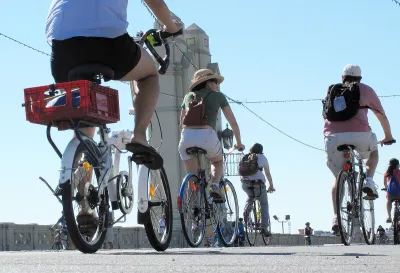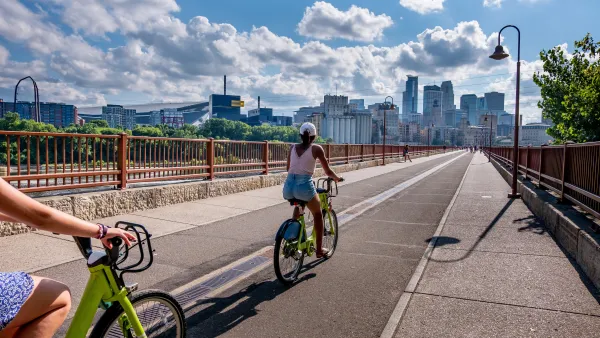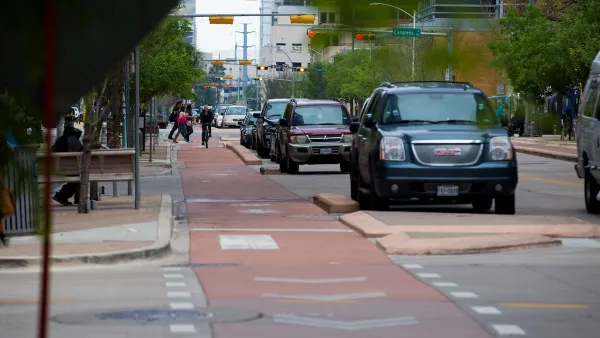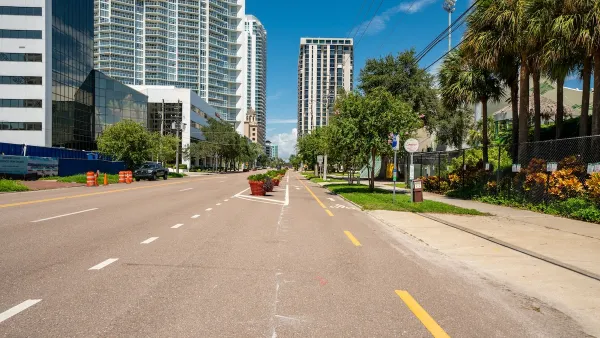Research reveals that, once a city reaches a certain threshold of bike infrastructure, opposition decreases and residents want more.

Has your city entered the ‘virtuous cycle’ of bikeability? Writing in Streetsblog USA, Kea Wilson describes the ‘tipping point’ at which residents begin calling for more bike infrastructure, signaling a desire to see biking as an everyday transportation mode.
The measure comes from advocacy group PeopleForBikes, which issues an annual list of City Ratings. Cities that score 50 or above on the organization’s SPRINT rubric, which “includes such measures as protected bike lanes, safe intersection treatments, and reduced speed limits that are unlikely to kill a cyclist in the event of a crash, among other factors,” are said to have reached the tipping point where “bike culture has firmly taken root.”
According to Martina Haggerty, senior director of local innovation at PeopleForBikes, “[That's] not to say that there aren't still improvements to be made [but it] probably means that more people are riding bikes in those communities because they feel safe and comfortable. And when more people start riding bikes, those people tend to become advocates for better bike infrastructure and for pro-bike policies, which, [in turn,] will get more people riding.”
This year, 183 communities achieved a score of 50 or higher, a dramatic jump from the 33 that reached that score in 2019. This “reveals for the first time just how fast these destinations have improved their biking scores over the years — and how, at a certain point, those wins become self-perpetuating.” However, those communities represent just 8 percent of the 2.300 communities on the list.
FULL STORY: Has Your City Passed the ‘Bikeability Tipping Point’?

National Parks Layoffs Will Cause Communities to Lose Billions
Thousands of essential park workers were laid off this week, just before the busy spring break season.

Retro-silient?: America’s First “Eco-burb,” The Woodlands Turns 50
A master-planned community north of Houston offers lessons on green infrastructure and resilient design, but falls short of its founder’s lofty affordability and walkability goals.

Delivering for America Plan Will Downgrade Mail Service in at Least 49.5 Percent of Zip Codes
Republican and Democrat lawmakers criticize the plan for its disproportionate negative impact on rural communities.

Test News Post 1
This is a summary

Test News Headline 46
Test for the image on the front page.

Balancing Bombs and Butterflies: How the National Guard Protects a Rare Species
The National Guard at Fort Indiantown Gap uses GIS technology and land management strategies to balance military training with conservation efforts, ensuring the survival of the rare eastern regal fritillary butterfly.
Urban Design for Planners 1: Software Tools
This six-course series explores essential urban design concepts using open source software and equips planners with the tools they need to participate fully in the urban design process.
Planning for Universal Design
Learn the tools for implementing Universal Design in planning regulations.
EMC Planning Group, Inc.
Planetizen
Planetizen
Mpact (formerly Rail~Volution)
Great Falls Development Authority, Inc.
HUDs Office of Policy Development and Research
NYU Wagner Graduate School of Public Service





























